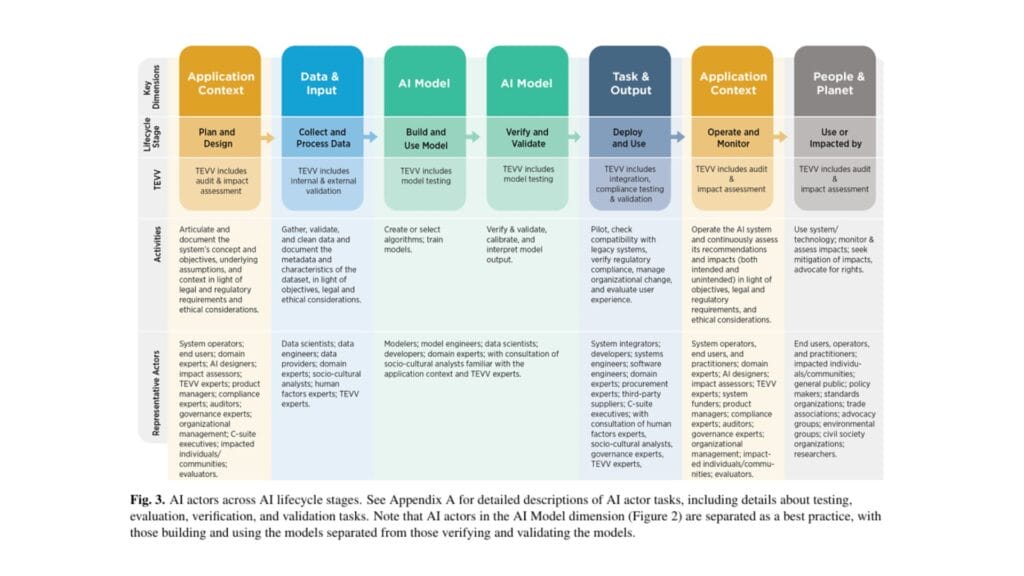The automotive content scale dilemma
Automotive companies are managing an unprecedented volume of customer-facing content as vehicles evolve into software-defined products.
Every feature release, system update, and market expansion triggers a cascade of communication needs: user interface text inside the vehicle, mobile notifications, release notes, car manuals, service documentation, dealer training materials, and regulatory filings.
Each must be accurate, localized, and delivered in parallel with product changes.
Over-the-air (OTA) updates have amplified the demand. OTA capabilities underpin competitive advantage by allowing manufacturers to improve vehicles post-sale, add features, and meet compliance requirements without physical service interventions.
Every OTA release expands the content workload: multilingual notifications to owners, safety and compliance documentation for regulators, training and enablement for dealers, and support resources for customers.
Regulation and manufacturer policies are increasing the operational pressure. Chinese authorities require pre-approval for autonomous driving OTA updates. The European Union’s General Safety Regulation is driving additional documentation demands around advanced driver-assistance systems. GM has begun linking warranty coverage to timely installation of OTA updates, which in practice makes clear, localized communication a prerequisite for protecting revenue and limiting liability.
The demand is not confined to OTA workflows. Electric vehicle launches require extensive market-specific education around charging standards, energy incentives, and service models.
Subscription-based services need continuous content updates as plans change and new features roll out. Manuals and service documentation are now living digital products, requiring synchronized refresh across languages.
Dealer and partner enablement material must match product evolution to maintain service quality and brand consistency.
Many organizations continue to rely on sequential, region-by-region workflows. Engineering hands off to central content or marketing teams, who forward updates to local markets or vendors under tight deadlines. Review cycles are inconsistent, terminology is hard to maintain, and technical changes often reach customers faster than supporting information.
This creates measurable impact: launch delays, uneven user experience across markets, higher customer support costs, and difficulty producing audit-ready documentation.
Content has become an operational dependency of global product strategy. It affects time-to-market, compliance exposure, and customer satisfaction in ways that traditional localization models struggle to address.
The current generation of manual processes cannot handle the required speed and complexity. Ad hoc use of machine translation or generative AI introduces new risks: deviation from established brand voice, inaccurate or incomplete technical language, and exposure of sensitive data to unmanaged tools.
Industry growth forecasts underscore the urgency. Analysts project the automotive AI market to exceed $400 billion by 2032, driven in part by the need to automate and scale product-related content.
Without a controlled approach to AI adoption, scaling output simply shifts risk rather than resolving it. Senior leaders require a content operations model that can match the pace of digital product delivery while preserving accuracy, compliance, and customer trust.
The risk: scale without oversight
Uncontrolled use of AI in content operations produces cumulative and often invisible risk. The first and most immediate issue is tonal drift. Large volumes of machine-translated or generatively drafted copy frequently deviate from established brand voice. At small scale this may appear trivial, but when applied across thousands of interface strings, notifications, and support assets it fragments the brand, creating different experiences for different markets and undermining consistency.
Accuracy is the second and more serious failure mode. Language models generate output that appears authoritative even when underlying context is missing or technical terminology is misapplied. For safety-related content — such as instructions tied to driver-assistance features or compliance updates — inaccurate translation is not a minor defect; it is a direct safety and liability exposure.
Governance gaps make these technical problems systemic. Employees often adopt generative tools informally to meet deadlines, creating “shadow AI.” Surveys in mid-2025 indicated that nearly half of U.S. workers were using unapproved AI tools at work without management oversight.
In this environment, sensitive data can move into uncontrolled systems, and there is no formal review of quality or compliance. For automotive manufacturers, which distribute safety-critical documentation and customer data across complex supplier and dealer networks, this represents a direct regulatory and reputational risk.
Compliance standards are evolving rapidly and are beginning to treat content as part of the regulated product. China’s requirement for pre-approval of autonomous driving OTA updates is one example; EU and U.S. safety frameworks are trending in a similar direction.
As a result, documentation and localized instructions must be auditable, traceable, and contextually correct. Governance frameworks such as the NIST AI Risk Management Framework are emerging to guide controls, monitoring, and validation. Aligning internal processes with these models reduces audit exposure and creates defensible records when regulators request evidence.

Cultural impact is another concern. When local teams perceive AI-generated output as “good enough,” they are more likely to bypass review steps, especially under launch pressure. This tendency erodes discipline and weakens established quality gates.
Industry analysts forecast that a significant share of generative AI initiatives will be abandoned by the end of 2025 due to inadequate data readiness, controls, or measurable business value. In content operations, the same dynamic leads to failed pilots, inconsistent adoption, and persistent risk even where automation was meant to provide relief.
The cumulative effect is subtle but damaging: fragmented brand identity, safety and compliance exposure, and an organizational culture that normalizes unverified automation. Without deliberate governance, attempts to scale content with AI increase operational complexity rather than reduce it.
The opportunity: AI that enhances rather than replaces
The volume and complexity of multilingual content in automotive operations make automation essential, but the way it is introduced determines whether it reduces or increases risk. Effective programs treat AI as an augmentation layer for content workflows, not a wholesale replacement for human expertise. The focus is on scale with control, accelerating the generation of routine material while preserving quality and oversight where brand and safety are exposed.
Modern language technology has matured beyond simple machine translation. Current systems can apply brand and technical terminology consistently, adhere to tone guidelines, and integrate with content management workflows. This capability matters in a regulated sector where accuracy and clarity have compliance implications.
A practical model is emerging. Routine, high-volume assets (such as feature update notes, UI text, and standard support content) can move through AI-assisted pipelines. Source updates trigger immediate draft translations, terminology checks against approved glossaries, and quality estimation that identifies segments likely to require human attention. This allows teams to move faster without sending unverified content directly to market.
For higher-risk categories (safety communications, regulatory submissions, legal disclaimers, and brand-defining marketing) AI still provides value but remains subordinate to human judgment. Drafting and pre-check functions reduce effort, while qualified reviewers make final decisions on clarity, cultural appropriateness, and compliance.
Enforcing brand voice and style can now begin before a linguist reviews a single sentence. Systems can check register, formality, and technical term usage across languages, so that a lane-keeping assist update in Japanese reflects the same tone and vocabulary used in English.
When release notes or OTA notifications are generated, market-specific variants can be produced with consistent structure and then escalated automatically if a safety term or legal phrase appears.
This approach also supports compliance. Pre-publication checks create an auditable record that content tied to vehicle safety or regulatory requirements was validated before release. As regulators increasingly treat OTA and digital documentation as part of the product’s safety envelope, this record becomes an asset during inspection or incident review.
Evidence from large automotive programs shows measurable benefit. Teams using AI-driven first drafts with built-in terminology and tone enforcement have reported significant reduction in review workload, in some cases cutting initial human editing effort by more than half.
Savings of this kind allow skilled linguists and technical writers to focus on the segments that truly require expertise rather than performing repetitive, low-value corrections.
The governance conversation inside these organizations is shifting. The question has moved from whether AI belongs in the content supply chain to how it will be managed and monitored. Boards and risk leaders increasingly expect clear rules to prevent uncontrolled tool use and data exposure. Content leaders want governance built into the platform itself: access controls, logging, quality gates, and escalation paths embedded in normal workflows rather than added as after-the-fact audits.
Specialized language technology platforms now support this model. They combine large-scale automation with built-in safeguards such as terminology management, pre-release quality scoring, workflow automation, and centralized record-keeping.
Phrase is one such solution: an AI-powered language technology platform that helps automotive leaders deliver accurate, consistent content at speed. It allows teams to generate multilingual drafts that respect brand voice and technical standards, apply automated quality checks before release, and route only flagged content for human review. The result is greater efficiency, reduced costs, faster turnaround, and consistent compliance at global scale.
This embedded governance is critical. Designing control into workflows from the start is far more sustainable than trying to retrofit oversight after content is produced. For automotive manufacturers, this shift is the foundation for scaling output safely. It enables the speed digital product development requires while protecting the accuracy, compliance, and trust their brands rely on.
Strategic advice: building a scalable, controlled content engine
Scaling multilingual content safely requires a deliberate operating model. The goal is to achieve speed without losing control or exposing the organization to regulatory or brand risk. Several practices are proving effective in large automotive programs.
Segment multilingual content by risk and volume
Content types differ widely in potential impact and production scale. Classifying them along two axes — business risk and volume — creates a practical foundation for automation.
High-volume, lower-risk assets such as user interface strings, error messages, or standard support articles can move through AI-first pipelines that apply terminology and tone rules, perform automated quality scoring, and use sampling to validate output.
High-risk or high-impact categories (manuals, safety instructions, post-incident communications, legal disclaimers, or emotionally expressive brand campaigns) should still keep a human-in-the-loop approach, with expert review built into the process to safeguard accuracy and intent.
AI can assist with drafting and checking but should not publish final content without specialist review. This segmentation makes it possible to move large volumes efficiently while reserving human judgment for areas with higher stakes.
Define clear boundaries for AI use
Boundaries should be written in direct language and shared widely. For each segment, specify where AI can draft, where it can only propose edits, and where it should not be used. Align these rules with an established governance framework so they are auditable and defensible. The NIST AI Risk Management Framework provides a useful model, emphasizing continuous monitoring, validation, and documentation. In practice, this means logging prompts, training data, and outputs; filtering or blocking sensitive material; and automatically routing high-risk segments to human review.
Embed continuous quality assurance
Automated quality checks allow more thorough review without increasing headcount. Model-assisted scoring can flag tone deviations, terminology issues, or inconsistent style before human reviewers see the content. These capabilities let teams focus on segments that truly need expert attention. Formalizing this process is critical; without it, volume can overwhelm reviewers and degrade standards.
Auto LQA
Use the power of AI to enhance
Language Quality Assessment (LQA)
Integrate brand voice and style enforcement
Large-scale automation should carry the company’s established voice and terminology rules into every language.
Systems can apply preferences for formality, idioms, and units of measurement, and maintain technical vocabulary so that user interfaces and manuals remain consistent with in-vehicle experiences. Embedding these rules early ensures that content is a seamless extension of the product and prevents the fragmented feel that erodes customer confidence.
Address process speed to reduce shadow AI
Shadow AI — unofficial use of generative tools — typically emerges when sanctioned processes are too slow or difficult. Reducing this incentive requires making approved tools as accessible as consumer alternatives. Integrating AI directly into the environments where content is created and giving teams clear, permissive guidelines for safe experimentation within defined boundaries both reduce unsanctioned usage and maintain oversight.
Link measurement to business outcomes
Volume alone is not an indicator of success. Senior leaders should track operational and customer impact. Useful metrics include:
- Time from source content sign-off to first localized publication in each market
- Percentage of content passing automated quality thresholds without human edits
- Post-launch rework rate and associated cost
- Support ticket deflection after localized content goes live
- Customer satisfaction or net promoter score changes correlated with improved content readiness
Regular, lightweight human evaluations remain valuable. Periodic checks on tone and clarity provide an additional signal that automation is supporting, not degrading, customer experience. Industry executives, including software leadership at major OEMs, now emphasize that the quality of in-vehicle software is judged as much by the accompanying words as by the code itself.
Building a controlled engine for content scale is less about individual tools than about structure. When risk segmentation, defined guardrails, embedded quality checks, brand governance, and outcome-based measurement operate together, teams can handle the accelerating content demands of software-defined vehicles without sacrificing trust, compliance, or customer satisfaction.
Conclusion: scaling responsibly and deliberately
Automotive companies are advancing through a period of structural change. Vehicles are now digital platforms, and the information that accompanies them — updates, guidance, compliance documentation, customer support — has become part of the product itself. The ability to deliver this content at the same speed and reliability as the software it describes is emerging as a core operational capability.
Achieving that capability requires a disciplined model for automation. AI can increase capacity and shorten cycle time, but it introduces risk if adopted without controls. Quality assurance, terminology management, and governance are not barriers to speed; they are what allow speed to scale safely.
Leaders who establish a controlled content engine, segmenting work by risk, defining clear use boundaries for AI, embedding automated checks, and measuring impact against business outcomes, position their organizations to keep pace with software-driven development while protecting brand consistency and regulatory compliance. They reduce rework, improve time-to-market, and maintain customer confidence as product complexity grows.
The strategic benefit extends beyond operational efficiency. When content flows reliably through governed pipelines, global expansion can happen faster and with lower friction. Customer-facing material arrives in each market with the same clarity and relevance as at home. Compliance teams can respond to regulators with evidence of control. Marketing and product groups can plan launches without building parallel translation and review efforts.
This approach turns multilingual content from a bottleneck into an enabler of growth. It allows companies to keep up with increasingly frequent OTA releases, support evolving digital features, and introduce new business models such as subscriptions and services without undermining customer experience.
The next step for organizations that have achieved controlled scale is to connect these operational gains directly to growth metrics. When leaders can measure and demonstrate how content readiness accelerates revenue realization, market penetration, and retention, localization and content operations shift from perceived cost center to clear strategic asset.
This is the path forward for automotive brands navigating global digital transformation: build disciplined, governed content systems that allow scale, protect trust, and enable faster growth in every market they enter.
Turbocharge global success with precision technology
Steer your brand towards global success with secure,
accurate multilingual content.





